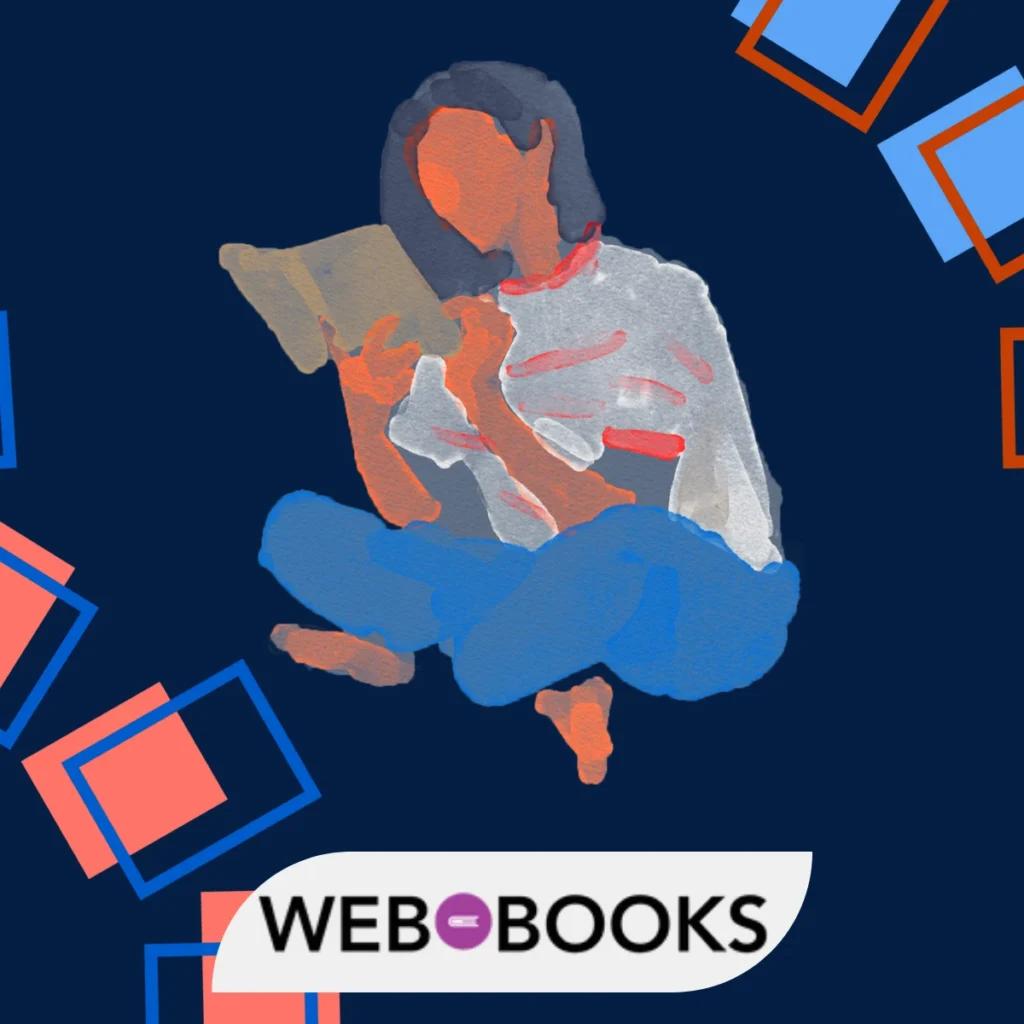
What Is Lateral Reading and How It Helps You Spot Fake News
We have a problem. We are all failing a test we don’t even know we’re taking.
The test is the internet. The subject is “truth.” And the people failing the hardest are, paradoxically, the “smartest” ones.
For our entire lives, we have been trained in a specific, “academic” way of reading. We were taught to read “closely.” When given a text, we slow down. We analyze the author’s tone. We look for supporting evidence within the document. We check the “About Us” page. We evaluate the “professionalism” of the site’s design.
This is “close reading.” It is an excellent skill for understanding Shakespeare.
It is a terrible skill for spotting fake news.
In fact, this very skill this deep, analytical, text-focused “close reading” is what makes intelligent people so vulnerable to online disinformation. We are trying to analyze the “text” when we should be analyzing the “source.” We are admiring the paint job on a car without ever checking to see if there’s an engine.
The people who ace this test are not literature professors. They are professional fact-checkers. And they do the exact opposite of what we were taught.
They never read the article first. They “read laterally.”
This is the single most important critical thinking skill of the 21st century. And it is the only reliable method for navigating a web designed to deceive you.

The Failure of “Smart” Readers
For years, the problem of “fake news” was treated as a problem of critical thinking. The solution, we were told, was to just teach people to be “smarter” readers.
Then, a landmark 2016 study by the Stanford History Education Group (SHEG), led by Professor Sam Wineburg, destroyed this entire assumption.
The study was simple. They gave a series of online tasks to three groups: Stanford University students (certified “smart people”), history professors (certified “experts”), and professional fact-checkers (from major news organizations).
The results were a catastrophe for the “smart” readers.
The students and professors failed, miserably and consistently. They were given a website and asked to evaluate its trustworthiness. They did exactly what they were trained to do. They stayed on the page.
They read the article closely. They analyzed its “tone.” They clicked the “About Us” link and read the site’s own description of itself. They pointed to the clean design and the “.org” domain as proof of legitimacy.
They were completely, utterly fooled.
They were duped by a “scientific” organization that was actually a front group for the fossil fuel industry. They trusted a “pediatric” association that was a front for anti-vaccine activists.
Why? Because they were “close reading” a performance. A propagandist’s single greatest skill is faking “authority.” They design the “About Us” page to sound reasonable. They buy the “.org” domain. They spend money on a clean layout. The “smart” readers were analyzing the exact things the liars had faked.
The fact-checkers, on the other hand, did something bizarre. They barely read the page at all.

What Is Lateral Reading? The Fact-Checker’s Method
The fact-checkers, upon landing on an unfamiliar site, did something that feels rude.
They ignored it.
Instead of reading “down” the page, they immediately left it. They opened new browser tabs. This, in its essence, is lateral reading.
Close Reading is Vertical. You stay on the page and dive “down” into the text. Lateral Reading is Horizontal. You move “across” the web, opening new tabs to investigate the source.
The professional fact-checker’s process, as identified by Wineburg and his team, looked like this:
-
Land on the Page: See an unfamiliar source, a “research institute” they’ve never heard of.
-
Ignore the Content: Do not read the article. Do not click “About Us.” Do not analyze the tone.
-
Open New Tabs: This is the critical move. They immediately open 3-4 new browser tabs.
-
Investigate the Source: In those new tabs, they start to Google. But they don’t just Google the topic. They Google the source itself.
Their search queries look like this:
-
“Who owns the ‘American College of Pediatricians’?”
-
“What is the ‘Institute for Climate Science’?”
-
“[Author’s Name] reputation”
-
“[Site Name] and ‘funding'”
They are not asking the website, “Who are you?” They are asking the rest of the web, “Who is this website?”
They are looking for what other, more established sources (like Wikipedia, The New York Times, The Guardian, Snopes, or a major university) have to say about the source.
The fact-checker is not a “reader.” They are an investigator. They are a “reputation manager.”

Why It Works: Reputation vs. Content
So, what is lateral reading’s “magic”? Why is it so much more effective?
It works because it correctly identifies what is fakeable and what is not.
Content is easy to fake. Anyone can write a “reasonable-sounding” article. Anyone can design a “professional-looking” website. Anyone can write a fake biography on an “About Us” page. Analyzing these things (close reading) is a waste of time. It’s like asking a potential con artist, “Pardon me, sir, are you a con artist?”
Reputation is hard to fake.
The internet is not a book. It is a network. A single, isolated node (a fake website) can look as real as it wants. But it cannot easily fake its reputation across the entire network.
When you Google the “American College of Pediatricians” (the anti-vax group), you will not find links from the real American Academy of Pediatrics. You will find articles from reputable sources (like the Southern Poverty Law Center) identifying it as a hate group.
The fake site cannot control what other people, on other servers, write about them.
Lateral reading is the act of checking the network’s opinion. It is the difference between reading a resume and calling the references. The “smart” readers were reading the resume. The fact-checkers were calling the references.
This method outsources the vetting process. Instead of you, a non-expert, trying to decide if a complex scientific claim is true, you are simply asking a trusted source (like Wikipedia, which is excellent for vetting sources) whether the website making the claim is legitimate.
You are moving from “content analysis” (which is hard) to “reputation analysis” (which is fast and easy).

A Step-by-Step Guide to Reading Laterally
This is not just a “theory.” It is a practice. It is a new mental habit that you must actively build. Here is how to spot fake news using the 4-step lateral reading method.
Step 1: STOP. This is the most important step. You land on a page. It has a shocking headline. You feel a strong emotion (anger, fear, validation). You have an immediate urge to read, to believe, to share. You must stop. Fight that urge. That emotional response is what the propagandist wants. Do not engage with the content.
Step 2: OPEN NEW TABS. This is the core action. Do not click any links on the page. Move your cursor to the top of your browser and open new, blank tabs.
Step 3: INVESTIGATE THE SOURCE. In the new tabs, start your investigation.
-
Who is this? Google the name of the website or the author.
-
What is their reputation? Look for a Wikipedia page. Wikipedia is one of the best tools for lateral reading, not for its articles, but for its sources and its discussions about a source’s neutrality. If a source doesn’t have a Wikipedia page, that is a massive red flag.
-
What do others say? Add terms like “funding,” “about,” or “reputation” to your search. A query like “‘Global Energy Institute’ funding” will quickly reveal it is the lobbying arm of the U.S. Chamber of Commerce, not a neutral scientific body.
Step 4: FIND THE ORIGINAL. This is a pro-level move. Many fake stories are not “fake,” but stolen and twisted. A fake site will take a real story from the Associated Press (AP) or Reuters, add one fake, explosive sentence, and post it as their own. Your job is to find the original report. Google a unique phrase from the article. If you find that the “original” is from a trusted wire service (like AP, Reuters, AFP) and the “shocking” detail is missing, you have found the lie.
Step 5: MAKE A JUDGMENT (And Only Then, Read). Only after you have a clear picture of the source’s reputation should you return to the original tab.
Now, you read the article, but you read it with “armor.” You know who funded it. You know their bias. You know their history. You are no longer a victim of the text. You are its master.
Conclusion: The New Literacy
To be a good reader in the 21st century, you must be a bad reader in the 20th-century sense.
The web is not a library. It is a chaotic, crowded, and often hostile city square. “Close reading” is the equivalent of standing still and listening intently to every single person who shouts at you.
Lateral reading is the art of moving through the crowd. It is the art of knowing who to ignore, who to listen to, and how to ask for directions.
This is the new literacy. It is not just a “trick” for spotting fake news. It is a fundamental shift in our relationship with information. It is the understanding that in a world of infinite, unvetted content, the source is always more important than the story.
Recommended for you

Why Poetry Is Gaining Popularity Among Young Readers
There is a paradox in the modern literary world. For decades, the narrative has been consistent: literacy is in decline, attention spans are nonexistent, and young people, in particular, do not read. Book sales are stagnant. The novel is fighting for its life against Netflix and TikTok. And yet, in the middle of this supposed […]

How to Publish a Book: A Step-by-Step Guide for New Authors
For every new author, the dream is the same. It is the moment of holding a finished, physical book in your hands. It is the smell of the paper, the weight of the object, the sight of your name on the cover. It is a dream of validation and completion. But between the final period […]

Best Biographies of Influential Figures
What makes a biography “great”? The simple answer is “accuracy.” A good biography, we assume, is one that gets all the facts right. It has the correct dates, the verified quotes, the detailed footnotes. This answer is true, but it is incomplete. It is the answer for a historian, not a reader. A simple collection […]

How to Read Academic Literature Effectively
Reading an academic journal article is not like reading a novel. It is not like reading a blog post. It is a completely different activity. A novel invites you in. A blog post gives you its point quickly. An academic paper, by contrast, is a fortress. It is dense, written in a specialized code, and […]

How to Take Notes from Books and Lectures
Look at a typical student’s notebook after a lecture. What you will likely see is a dense, frantic wall of text. The student has spent 50 minutes in a desperate sprint, trying to act as a human stenographer, to capture every word the professor said. They leave the lecture exhausted, with cramped hands and a […]

Sci-Fi vs Fantasy: Key Differences and What to Read
On the surface, the difference seems simple. One genre has spaceships and aliens. The other has dragons and elves. Science Fiction, we are told, is about the future, and Fantasy is about the past. This is a shallow analysis. And it is wrong. This “aesthetic” definition one of props and settings collapses immediately under any […]

Top Modern Novels Worth Reading
What makes a novel “modern”? The word itself is a trap. Does “modern” mean new? Does it mean it was written in our lifetime? Or does it refer to a specific, explosive period in art (capital ‘M’ Modernism) that shattered every rule it could find? We believe it’s all three. The “modern novel” isn’t just […]

How to Choose a Horror / Gothic Book: A Reader’s Guide
Stop judging a book by its cover. This is true for all literature, but it is an iron law for horror. A bloody axe, a screaming face, a shadowy figure on the cover these things rarely signal a truly terrifying book. More often, they signal a cheap thrill. The real masterpieces of the genre, the […]